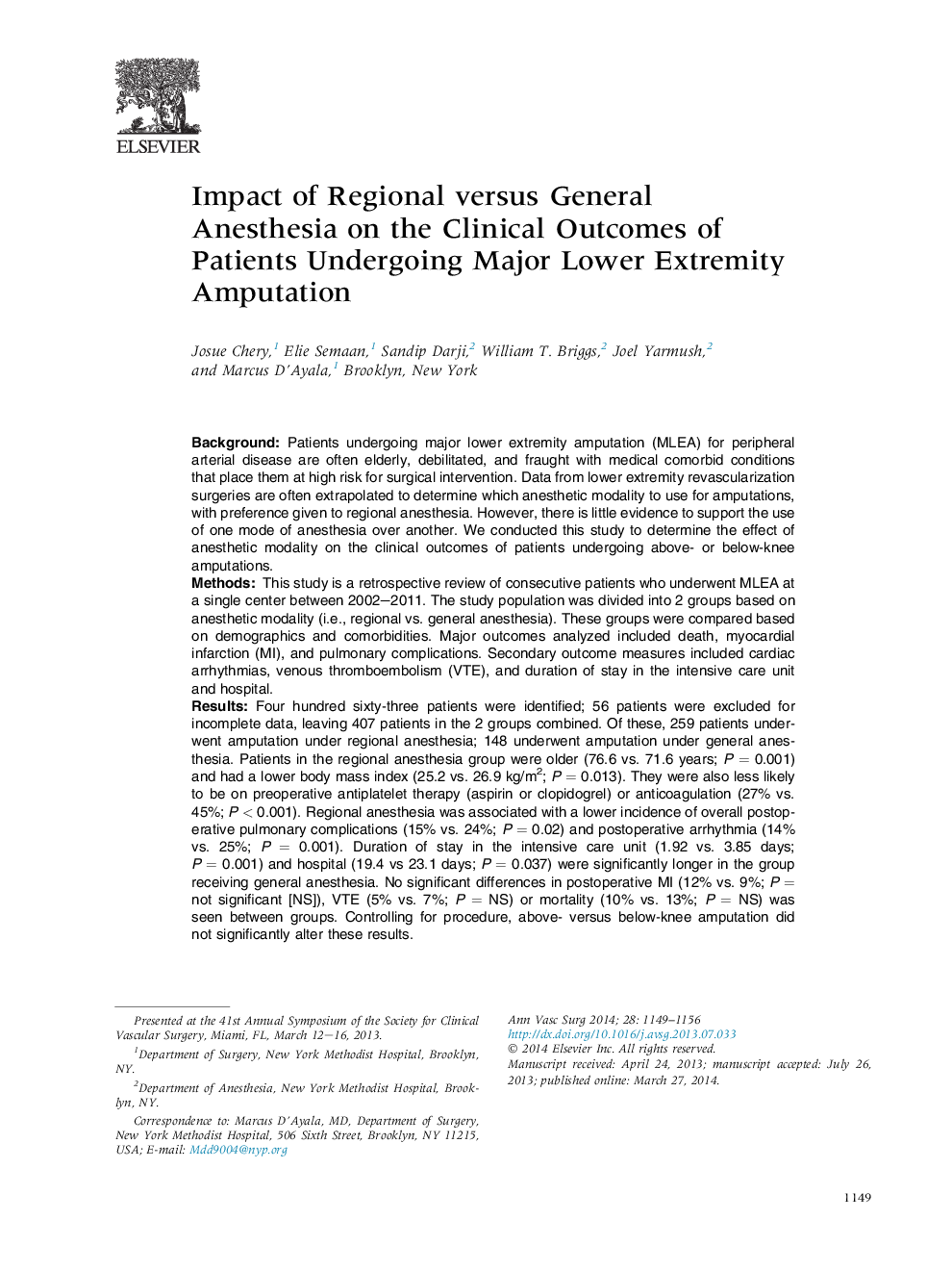| Article ID | Journal | Published Year | Pages | File Type |
|---|---|---|---|---|
| 2886118 | Annals of Vascular Surgery | 2014 | 8 Pages |
BackgroundPatients undergoing major lower extremity amputation (MLEA) for peripheral arterial disease are often elderly, debilitated, and fraught with medical comorbid conditions that place them at high risk for surgical intervention. Data from lower extremity revascularization surgeries are often extrapolated to determine which anesthetic modality to use for amputations, with preference given to regional anesthesia. However, there is little evidence to support the use of one mode of anesthesia over another. We conducted this study to determine the effect of anesthetic modality on the clinical outcomes of patients undergoing above- or below-knee amputations.MethodsThis study is a retrospective review of consecutive patients who underwent MLEA at a single center between 2002–2011. The study population was divided into 2 groups based on anesthetic modality (i.e., regional vs. general anesthesia). These groups were compared based on demographics and comorbidities. Major outcomes analyzed included death, myocardial infarction (MI), and pulmonary complications. Secondary outcome measures included cardiac arrhythmias, venous thromboembolism (VTE), and duration of stay in the intensive care unit and hospital.ResultsFour hundred sixty-three patients were identified; 56 patients were excluded for incomplete data, leaving 407 patients in the 2 groups combined. Of these, 259 patients underwent amputation under regional anesthesia; 148 underwent amputation under general anesthesia. Patients in the regional anesthesia group were older (76.6 vs. 71.6 years; P = 0.001) and had a lower body mass index (25.2 vs. 26.9 kg/m2; P = 0.013). They were also less likely to be on preoperative antiplatelet therapy (aspirin or clopidogrel) or anticoagulation (27% vs. 45%; P < 0.001). Regional anesthesia was associated with a lower incidence of overall postoperative pulmonary complications (15% vs. 24%; P = 0.02) and postoperative arrhythmia (14% vs. 25%; P = 0.001). Duration of stay in the intensive care unit (1.92 vs. 3.85 days; P = 0.001) and hospital (19.4 vs 23.1 days; P = 0.037) were significantly longer in the group receiving general anesthesia. No significant differences in postoperative MI (12% vs. 9%; P = not significant [NS]), VTE (5% vs. 7%; P = NS) or mortality (10% vs. 13%; P = NS) was seen between groups. Controlling for procedure, above- versus below-knee amputation did not significantly alter these results.ConclusionsRegional anesthesia for patients undergoing MLEA is associated with a lower incidence of postoperative pulmonary complications and cardiac arrhythmias. It is also associated with lower resource use. As such, regional anesthesia should likely be the favored anesthetic modality for patients undergoing MLEA.
